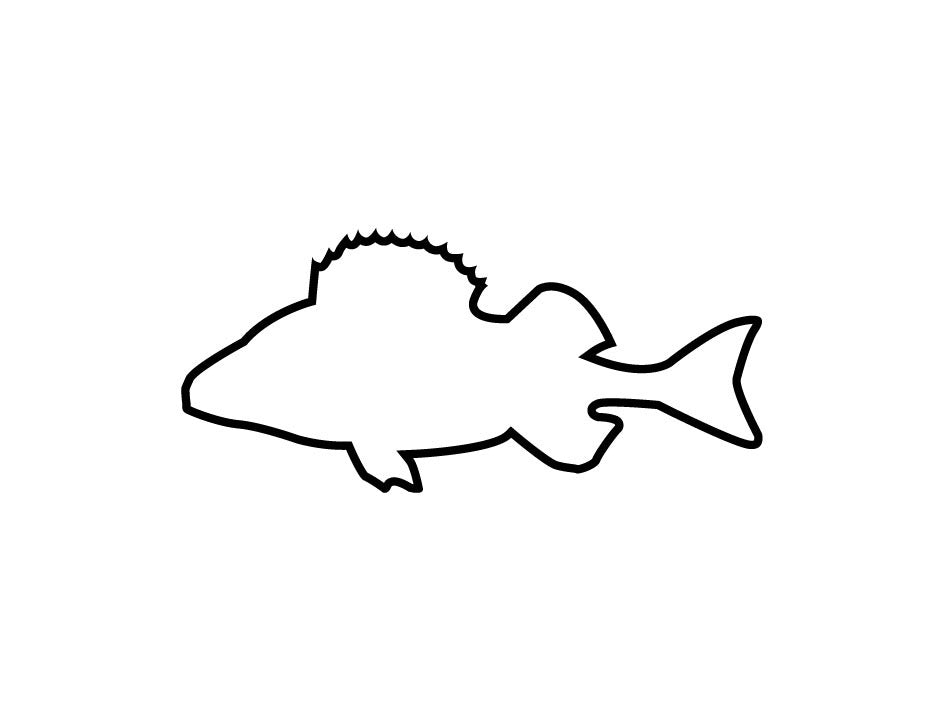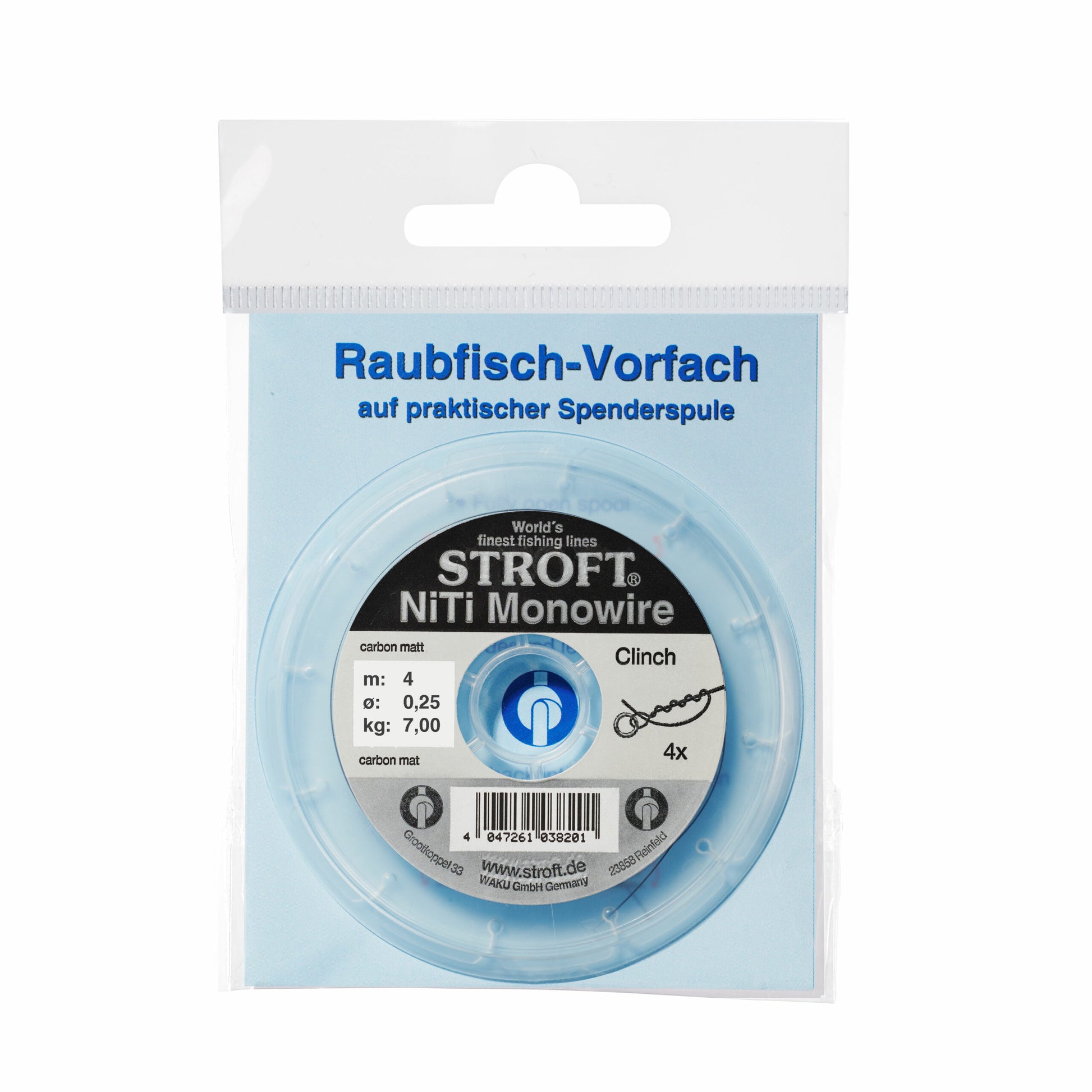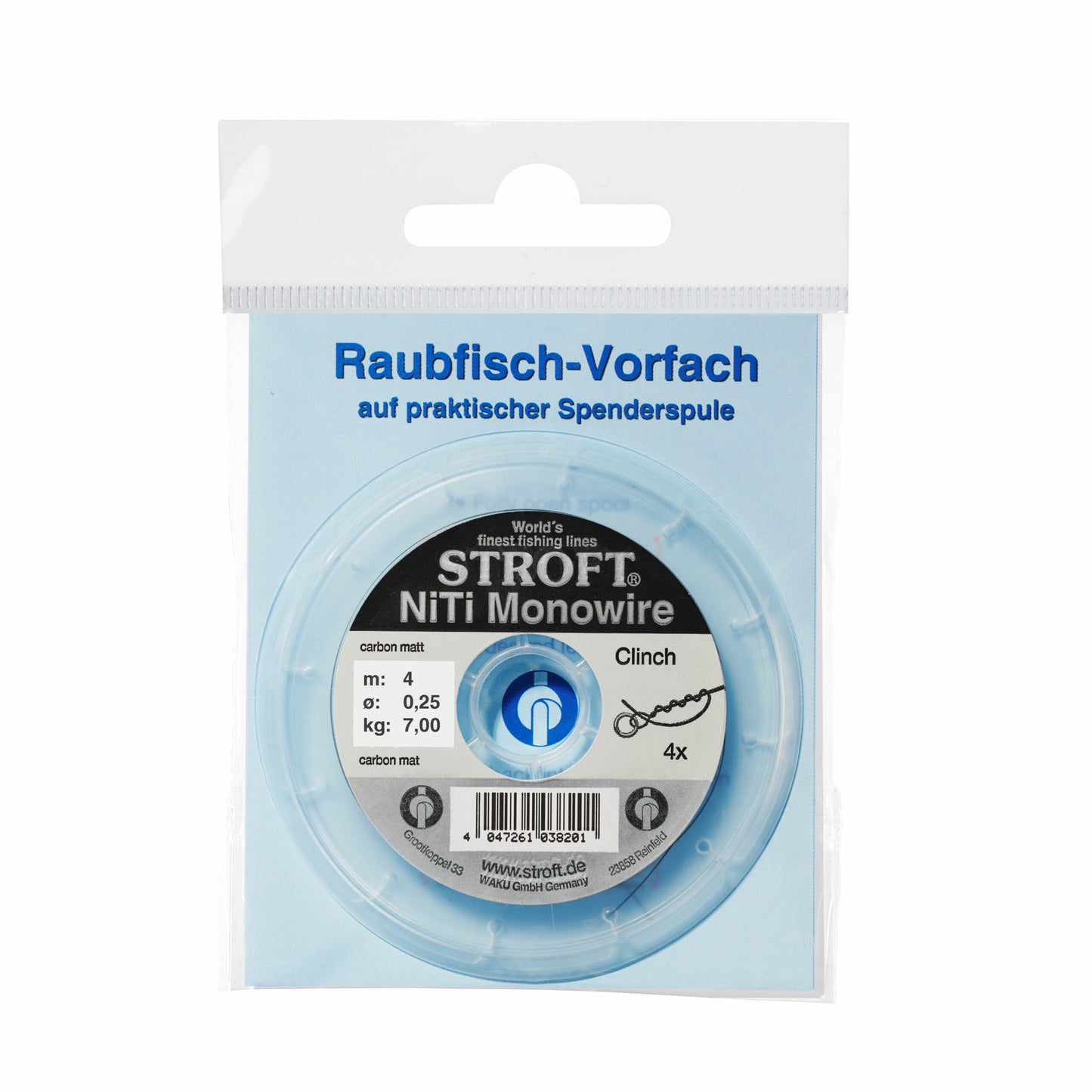The new NiTi predator leaders from Stroft solve the well-known problems with leader lines of this type, as they can still be knotted even with larger diameters, thus bypassing a connection with crimp sleeves and increasing the carrying capacity by preventing slipping or tearing due to sharp edges. When knotted with a clinch knot, a maximum load capacity of up to 100% of the linear load capacity can be achieved. Note: The NiTi Monowire leaders are basically stiffer than the NiTi Polywire leaders braided from several single lines. The Niti Polywire leaders are braided from 1x3 single lines (0.20mm 3.10kg) or 1x7 single lines.
Wires made of nickel-titanium alloys (NiTi) are becoming increasingly popular in the predator fishing sector - mainly because of their unique property of always springing back to their former state even after severe bending. However, there are also disadvantages - namely when "connecting" these nickel-titanium wires to swivels, carabiners, hooks and others. Clamping sleeves are often used for this purpose. But unfortunately these connections have strongly fluctuating load-bearing capacity values, also because of the sharp edges of the clamping sleeve. If the ferrule is squeezed too much, there is a risk of notch effect at the end of the ferrule (NiTi wires are generally more susceptible to notch effect than steel wires), and this could reduce the load capacity. If the crimp is too weak, there is a risk of slippage, which also leads to a reduction in load capacity. Some companies also recommend "knotting". However, here too, depending on the wire properties, only strongly fluctuating knot load-bearing forces are achieved. In addition, the stiffness of thicker monowires is so great that knotting becomes very difficult.
STROFT NiTi Monowire and STROFT NiTi Polywire solve these problems and are the first choice when it comes to the ultimate predator leader. The connections are quick and easy to make. No additional ferrules, no crimping pliers - a simple, easy to tie clinch knot with 4 wraps is the solution - and with STROFT NiTi (with the thinner wires) this can even achieve a carrying capacity of up to 100% of the linear carrying capacity! This has been made possible by a very specific tuning of the alloy composition to those properties that are desired for predatory fish leaders - namely: maximum bite strength, super elasticity, optimum (easy) knotability, best possible shape memory, maximum carrying capacity/highest knot carrying capacity, sufficient stretchability (8%) and reflection-free surface.
STROFT NiTi Monowire and STROFT NiTi Polywire fulfil all these properties in an optimal way. For example, a 0.20 STROFT NiTi Monowire has a load-bearing capacity of 4.2 kg, which is almost reached even in the clinch knot.
Note: Monowire is generally stiffer than Polywire, which consists of several individual wires. Therefore, if you want to use the clinch knot, you should choose polywire with a diameter of 0.30 mm or more (because monowire then becomes quite stiff). On the other hand, the clinch knot can still be tied well with 0.60 mm Polywire! However, if 0.40 mm monowire is to be used, then clamping sleeves are advisable. And in order to prevent or at least reduce the notch effect mentioned above, it makes sense to "defuse" the relatively sharp inner edge of the clamping sleeve beforehand (e.g. with a 90° countersink). Afterwards, a heat-shrinkable sleeve should be pulled over the connection. (This also applies if you prefer to use clamping sleeves instead of clinch knots for other diameters). The clinch knots can of course also be covered with heat shrink tubing. This is not necessary for reasons of load-bearing capacity, but perhaps for optical and practical reasons. For example, it reduces the snagging of water plants and algae. The shrink tubing then also covers the protruding NiTi end and also prevents splicing during polywire. This would not have any effect on the load-bearing capacity, but it might not look nice. Splicing of the polywire can also be prevented by a drop of super glue.
The noise that occurs when NiTi wire is stretched is typical of the material and therefore a characteristic of NiTi material!




